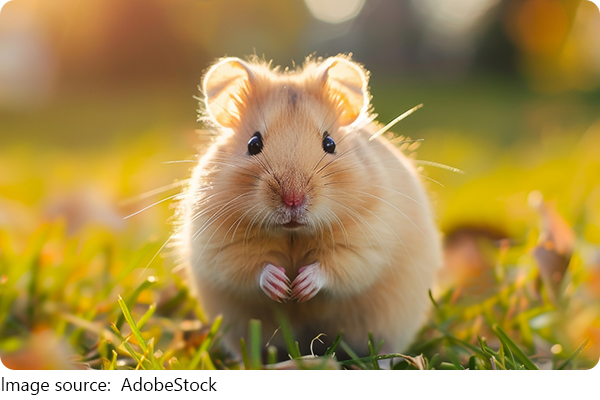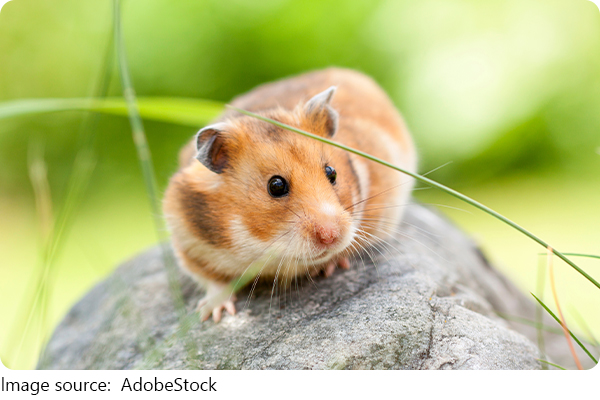Hamster Cage Cleaning

If you're a hamster parent, you know how important it is to keep their cage clean and comfortable. But how often should we actually clean the entire cage? Regular cleaning is key to ensuring our little furry friends stay healthy, but we don't want to overdo it or stress them out.
Let's dive into the details and figure out the best cleaning routine for your hamster's cage!
Why Cleaning Matters
We all know that hamsters are adorable, but they can be a bit messy! Hamsters are naturally curious creatures, and they often love to dig around and explore their space. Over time, their food, bedding, and waste can accumulate, which can lead to unpleasant smells, bacteria buildup, and even health problems for our pets. Regular cleaning not only helps maintain a fresh environment but also promotes your hamster's well-being.
Hamsters can be prone to respiratory issues or skin infections if they live in an unclean environment, so it's essential for us to stay on top of cage cleaning to prevent these problems. But how often should we go beyond spot cleaning and do a full cage scrub down?
Full Cage Cleaning Frequency
The general rule of thumb is that we should thoroughly clean our hamster's cage once a week. This includes removing old bedding, cleaning all surfaces, and replacing food and water containers. However, this can vary depending on the size of the cage, the number of hamsters you have, and the type of bedding you use.
If your hamster has a larger cage or multiple levels, it might take a bit longer for it to get dirty, so a deep clean every two weeks may be enough. On the other hand, if you have a smaller cage or a hamster that tends to make a mess quickly, you may need to clean it more often.
Spot Cleaning Between Full Cleans
While a full clean is necessary once a week or every two weeks, it's important to spot clean in between to keep things fresh and hygienic. Spot cleaning involves removing soiled bedding, uneaten food, and any waste that may have accumulated.
We can do this every 2 to 3 days to keep the cage from getting too smelly or dirty. Make sure to change out any wet bedding right away, as moisture can lead to mold and bacteria buildup. Spot cleaning is also a good time to check your hamster's food and water containers to make sure they're clean and full.
Steps for Thorough Cage Cleaning
When it's time for a full cage clean, here's a step-by-step guide to make the process easier:
1. Remove Your Hamster: Always take your hamster out of the cage before cleaning. Place them in a safe, comfortable place while you work. You can use a temporary playpen or a hamster ball to keep them occupied during the cleaning.
2. Empty the Cage: Remove all bedding, toys, food, and water containers from the cage. Discard any soiled bedding and uneaten food.
3. Clean the Cage: Use a mild soap and warm water to scrub the cage. Avoid harsh chemicals or cleaners, as they can be toxic to your hamster. Make sure to clean every surface, including the corners, and any accessories like wheels and tunnels.
4. Rinse Thoroughly: After scrubbing, rinse the cage thoroughly with warm water to remove any soap residue.
5. Dry the Cage: Use a clean towel or cloth to dry the cage completely before putting everything back in.
6. Replenish Bedding and Accessories: Add fresh bedding to the cage, making sure it's deep enough for your hamster to burrow. Replace their food and water containers with fresh ones.
Cleaning Tips for a Safe Environment
Here are some additional tips to make cleaning safer and more comfortable for both you and your hamster:
1. Use Safe Cleaning Products: Avoid using strong chemical cleaners or scented sprays. Opt for non-toxic, pet-safe cleaners or natural cleaning agents like vinegar and baking soda.
2. Check for Wear and Tear: While cleaning, take a moment to check the condition of your hamster's cage. Look for any broken parts or areas where the grills may be loose. A damaged cage can be a safety hazard for your hamster.
3. Don't Over-clean: While it's important to keep the cage clean, hamsters are sensitive to changes in their environment. Over-cleaning can remove familiar scents and may stress your hamster out. Aim to maintain a balance between cleanliness and comfort.
4. Keep Their Habitats Natural: It's important to leave some of the old bedding behind during cleaning to help retain familiar smells. This can make your hamster feel more at ease when they return to their freshly cleaned cage.
Signs You Need a Cleaning Right Away
There are times when your hamster's cage will need more attention than usual. Here are a few signs that it's time for a deep clean, even if it's not yet your usual cleaning day:
• Strong Odor: If you notice a strong, unpleasant smell coming from the cage, it's a sign that waste or food is starting to build up. A full clean is needed immediately.
• Wet Bedding: Wet bedding can lead to bacterial growth, so if you spot any dampness, replace it right away.
• Dirty Toys or Wheels: If your hamster's toys or exercise wheels are getting grimy, clean them thoroughly during your cage cleaning routine.

Final Thoughts
A clean cage is a happy cage! By sticking to a weekly full cleaning routine and regular spot cleaning, we can help our hamsters thrive in a clean, safe environment. Remember, regular cleaning not only keeps their habitat fresh but also ensures they stay healthy and comfortable.
Do you have any tips or routines for cleaning your hamster's cage? Feel free to share your experiences and thoughts—we're all in this together to keep our furry friends happy and healthy!
-
 Yawning Dogs ExplainedIs your dog yawning because they're tired or just imitating us? Find out what's behind the behavior!
Yawning Dogs ExplainedIs your dog yawning because they're tired or just imitating us? Find out what's behind the behavior! -
 Hamster Cage CleaningHow often should we clean our hamster's cage to keep them healthy and happy? Let's explore the best cleaning practices!
Hamster Cage CleaningHow often should we clean our hamster's cage to keep them healthy and happy? Let's explore the best cleaning practices! -
 Turtle Hibernation Tips5 important things to keep in mind when helping your turtle through hibernation. Let's ensure they stay safe and healthy!
Turtle Hibernation Tips5 important things to keep in mind when helping your turtle through hibernation. Let's ensure they stay safe and healthy!